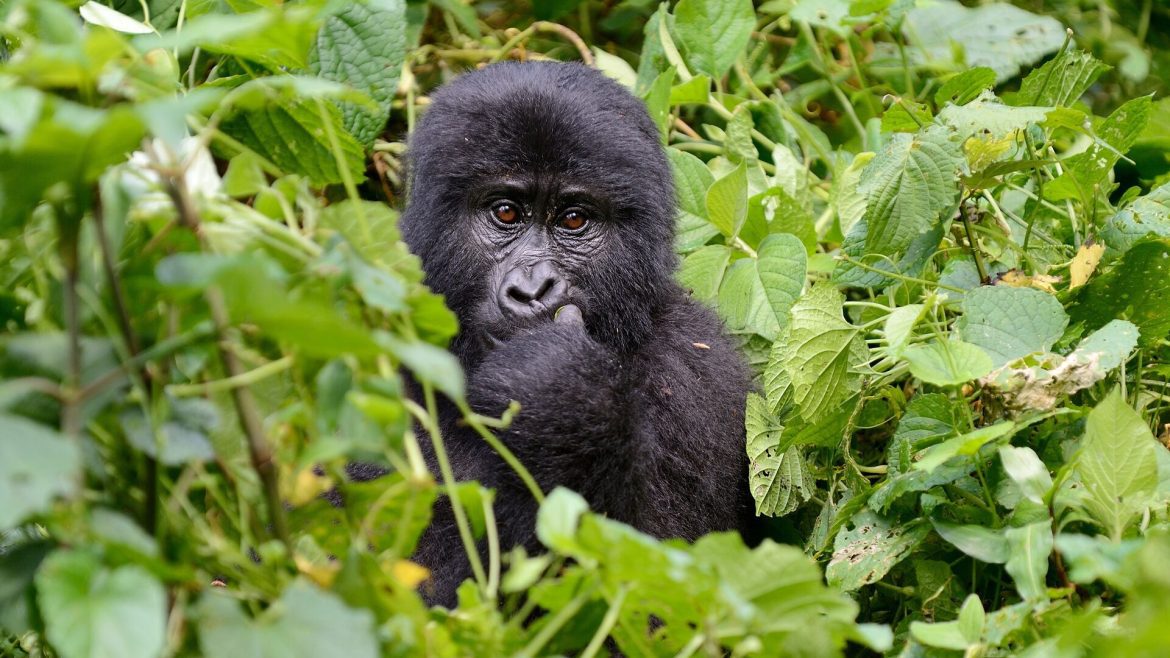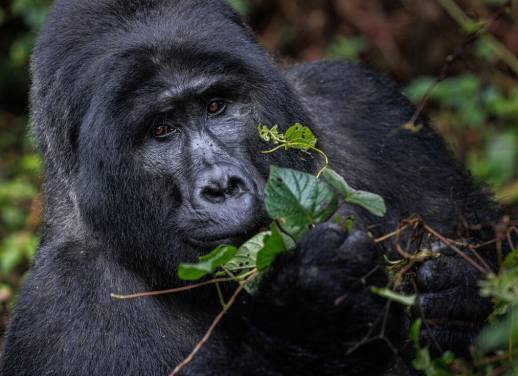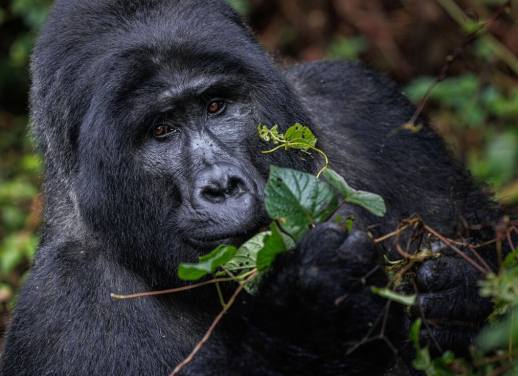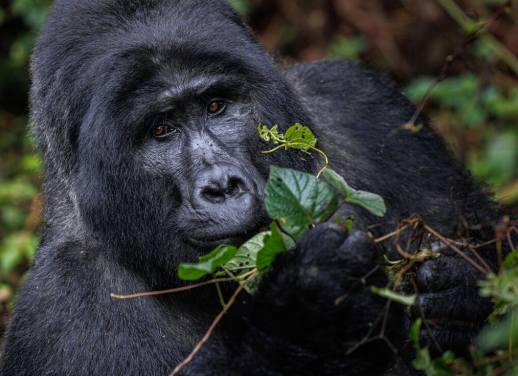On a recent gorilla trekking trip in Uganda, Intrepid’s GM of Central America and Mexico met with a veterinarian from Gorilla Doctors to learn about the reciprocal roles of gorilla tourism and conservation.
‘I don’t see any successful conservation efforts if it wasn’t for tourism’, Dr Noel, the regional pathologist for Gorilla Doctors, declared emphatically to our group. I couldn’t help but be sceptical – could it be that simple?
Having worked with Intrepid for many years, I knew a bit about how gorilla tourism works. When you trek into Bwindi Impenetrable Forest in Uganda or Volanoes National Park in Rwanda, you’re encountering gorilla families that have gone through a habituation process that involves regular visits from researchers, conservationists, rangers, and, in some cases, tourists to get the animals comfortable with human visitors. The process can take years, and once a family consistently demonstrates ease and tolerance around humans, they’re tracked on foot daily and each day, permitted groups are assigned to a family and allowed to visit for one hour.
After nine years of wanting to see gorillas in the wild, I was finally in Uganda about to make my dream a reality. But in the days leading up to my Remarkable Rwanda & Gorillas of Uganda trip, I started wondering about whether I should be doing this trip at all.
Questions raised and answered
Part of what had triggered these questions was watching Vianet Djenguet’s impactful documentary, Silverback. I wanted to watch it to satiate and sustain my pre-trip excitement and educate myself on the habituation process. However, what I watched was Vianet’s shift from wanting to film the habituation process for the first time to questioning whether it’s something that should be done at all, and even grappling with whether he should be there.
It raised a lot of questions. Would I be unwittingly contributing to an extractive tourism experience? Is the habituation process harmful or unethical? Does tourism have a negative impact on the gorillas longer term?


So I was now sitting in the headquarters of Gorilla Doctors, with the opportunity to ask an expert these questions. Gorilla Doctors is an NGO and Intrepid Foundation partner based in Musanze, on the edge of the Volcanoes National Park in Rwanda, but who work across mountain gorilla habitats in Rwanda, Uganda and the Democratic Republic of Congo. Intrepid travellers get the chance to visit their headquarters on Remarkable Rwanda & Gorillas of Uganda and Gorillas & East Africa Safari.
Dr Noel had taken our group of travellers through an information session about their work and opened the floor to questions. The group didn’t hold back, and neither did Dr Noel.
‘Mountain gorillas are the only species of ape whose population is increasing’, he said solemnly, in answer to the question of whether the number of gorillas is increasing or not.
He then took us through data from population studies that shows that, where habituated gorillas are also supported by Gorilla Doctors, their population has grown four per cent per year. For habituated gorillas that don’t receive veterinary support from Gorilla Doctors, the growth rate is two per cent. The thinking is that habituated gorillas tend to live in areas frequently patrolled by rangers and where the presence of tourism and conservation programs deters illegal activities.
For unhabituated gorillas (which don’t receive veterinary support), populations are in decline, down one per cent per year, often because of the habitat loss, human-gorilla conflict, deforestation, climate change induced food shortages, illegal wildlife trade and poaching. While mountain gorillas aren’t often targeted by poachers for meat, they often get caught and injured by snares set for other animals. So far, so clear.
The power of education and conservation
According to Dr Noel, increased awareness is one of the most positive effects of the growth of gorilla tourism.
‘For conservation to succeed, people have to know the species exists, and then they’ll work towards reducing the risks to that species,’ he explained plainly.
He looked around at our group, and continued, ‘Look around at this group, think about how many people will hear about your experiences, and think about how much awareness that creates’.
‘Tourists have to fulfil health requirements to enter the forest to see the gorillas. Poachers do not. Honey collectors do not. Bamboo cutters do not.’
He also believes strongly in starting awareness early, with kids. ‘Every chance I get I talk to the primary school kids. Because if we wait until they’re at university to teach them about conservation, there’ll be nothing left. Conservation isn’t about just the big famous animals like gorillas, conservation starts with the chameleons around their houses’.
Still, the Silverback documentary raised some valid points. One of the main concerns of having tourists close to gorillas is the health risks. This concern is justified, as humans and gorillas share over 98 per cent of their DNA and diseases can be passed easily between us.
As one of the senior veterinarians, Dr Noel was particularly qualified to speak to this. ‘Tourists have to fulfil health requirements to enter the forest to see the gorillas. Poachers do not. Honey collectors do not. Bamboo cutters do not. There is a large local population who rely on the forest resources, and who interact with these animals, and we don’t know their health status’.
There are plenty of rules in place for tourists who encounter gorillas, and they’re strictly enforced. Tourists who’ve got an infection or infectious illness, such as a cold, aren’t allowed to visit the gorillas, and wearing a mask is mandatory for all otherwise healthy tourists who do visit them. Visits are limited to one group of eight tourists per gorilla family per day. At this point, not getting sick became one of my main aims for the following days until our scheduled visit to the gorillas.
It’s worth noting that Gorilla Doctors doesn’t intervene in all situations; they only intervene and treat gorillas who are at risk of death – for example, if they’re caught in a poacher’s snare, showing signs of severe illness, under threat of infectious disease or orphaned when young. They aim to visit every gorilla family once per month but prioritise clinical issues over routine check-ups. The most common cause of death is infanticide – the killing of infant gorillas by adult gorillas – but this is something they leave to happen naturally, however sad it might be for the veterinarians who know each of the habituated gorillas by name.
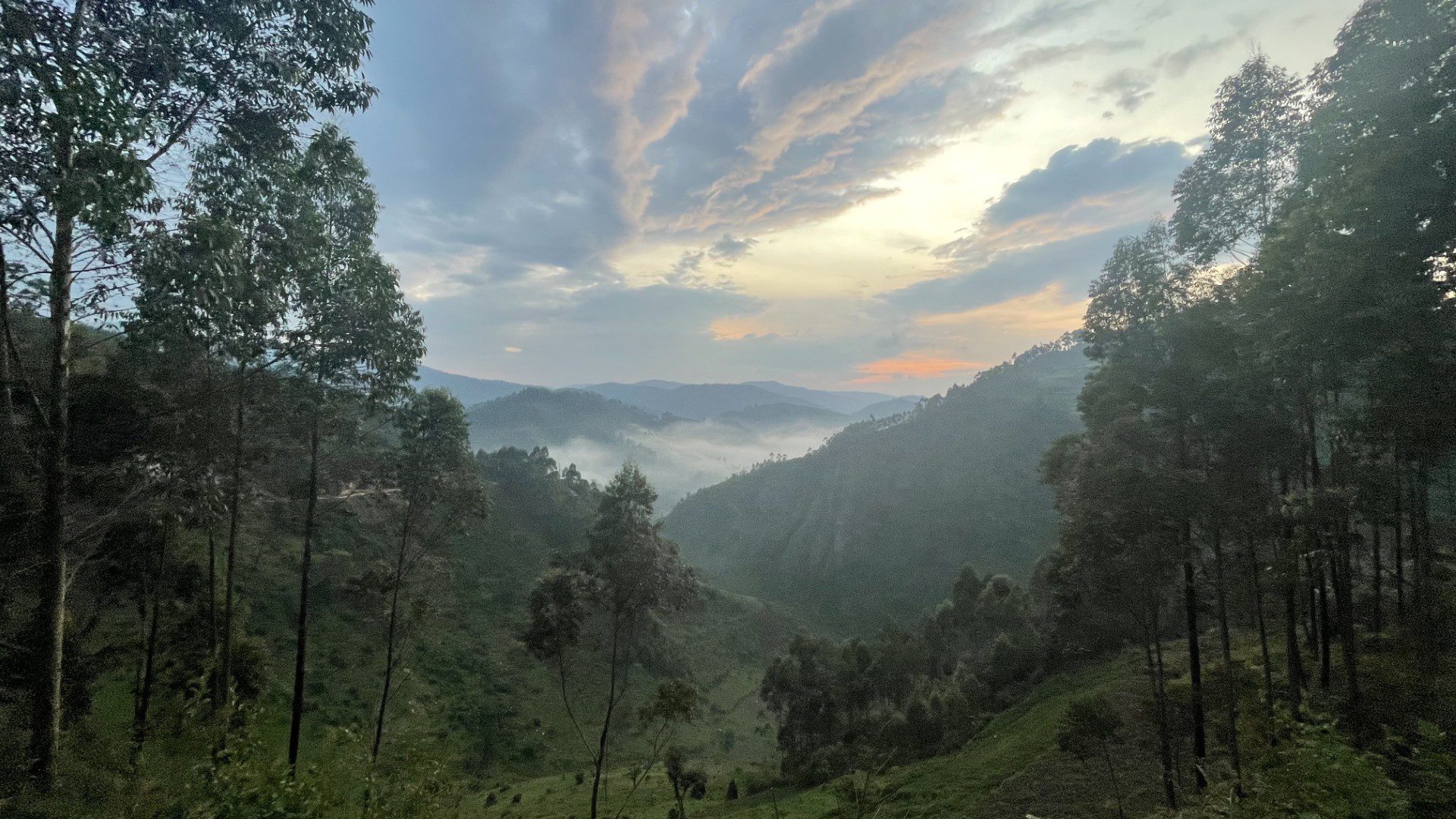
How tourism helps gorillas
However, the most common theme in Dr Noel’s answers, and the main argument in favour of habituating gorillas for tourism purposes, was the economics.
‘Even If we remove 100 traps, maybe 20 gorillas would still die in traps. But by investing in the community [by providing economic and educational incentives], the numbers of gorillas killed by poachers are going down, and that reduction is sustainable for the long term,’ Dr Noel says.
When done responsibly, gorilla tourism involves employing large numbers of local people as trackers, rangers, porters and more. Many trackers are ex-poachers or from poacher families, and there are teams of porters from local communities ready to help tourists with the trek through the thick jungle. For gorilla populations to grow under the current socio-economic conditions in Uganda, Rwanda and the DRC, gorilla tourism needs to provide communities with a more substantial economic benefit than poaching or the illegal wildlife trade.
Dr Noel summed up his final thoughts: ‘Tourism is the key to protecting wildlife, but we need to be smart about how we do it. That’s why it’s limited to eight people per gorilla family per day, to mitigate any impact on their behaviour. We need them to keep their fear of humans.’
I left Gorilla Doctors HQ feeling more informed, my doubts and questions answered. It’s a shame that habituation or veterinary interventions are the only viable options for protecting mountain gorilla populations, but they are, in the world we live in. You only have to watch Gorillas in the Mist, or the brilliant, brave documentary, Virunga, to see what happens to gorillas in times when, or areas where, they’re not protected for the purposes of tourism.
I was now back to looking forward to my trek to see the gorillas with childlike excitement, albeit with a more well-rounded understanding of the circumstances around the experience.


Meeting the gorillas
Armed with the knowledge from Dr Noel, when our day finally came, I did what I could to contribute to the notion that there’s more money to be made from tourism than poaching. I opted to pay over the going rate to a local porter to carry my tiny backpack and was uncharacteristically generous when I tipped our local guides and trackers, knowing those payments would stay with them.
There were 56 people in total seeing the eight gorilla families on the day that we went. With each permit costing approximately $1000 USD, that day’s revenue from permits was $56,000 USD, which supports wildlife and conservation efforts – approximately 80 per cent of Uganda’s National Wildlife Authority’s budget stems from gorilla tourism permits. Not to mention the money that enters the communities from tourists staying in local hotels and lodges, eating in local restaurants, paying to get to the national park, buying souvenirs and other expenses.
To be honest, all of my previous thoughts of permit costs and pros and cons disappeared the instant I saw my first wild gorilla. It was a magical moment, seeing one of the family swinging out of a nearby tree, a memory which will stay with me forever. We spent one wonderful hour in the presence of these majestic animals, watching them working their way through the tastiest foliage they could find. They seemed completely indifferent to our presence.
Reflecting on my experience since, I feel that going in with my eyes wide open to the circumstances of my visit made it even more impactful. I left East Africa feeling like I wanted to do more – spread the word, tell the gorillas’ story and encourage more people to experience this conservation success story. Gorilla Doctors’ aim is to become redundant, to not be necessary for the gorilla population to be self-sustaining. Until that time, the work they do, made possible by habituation and funded primarily by responsible tourism, will need to continue.
Explore Intrepid’s gorilla trekking trips in Uganda and Rwanda and learn more about how The Intrepid Foundation supports the work of Gorilla Doctors.

